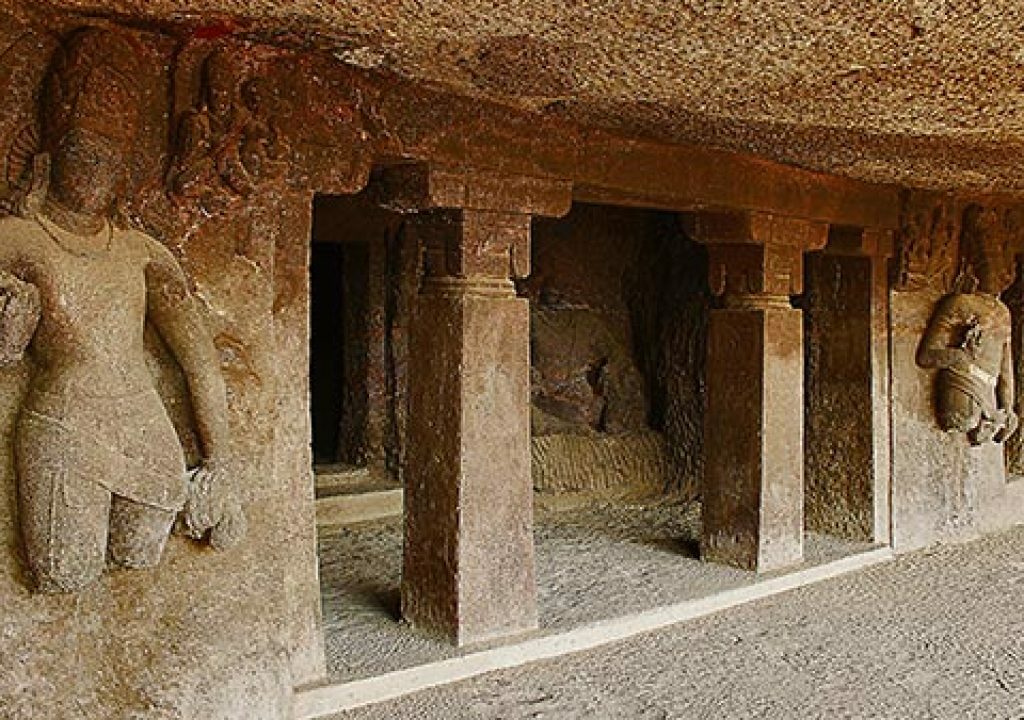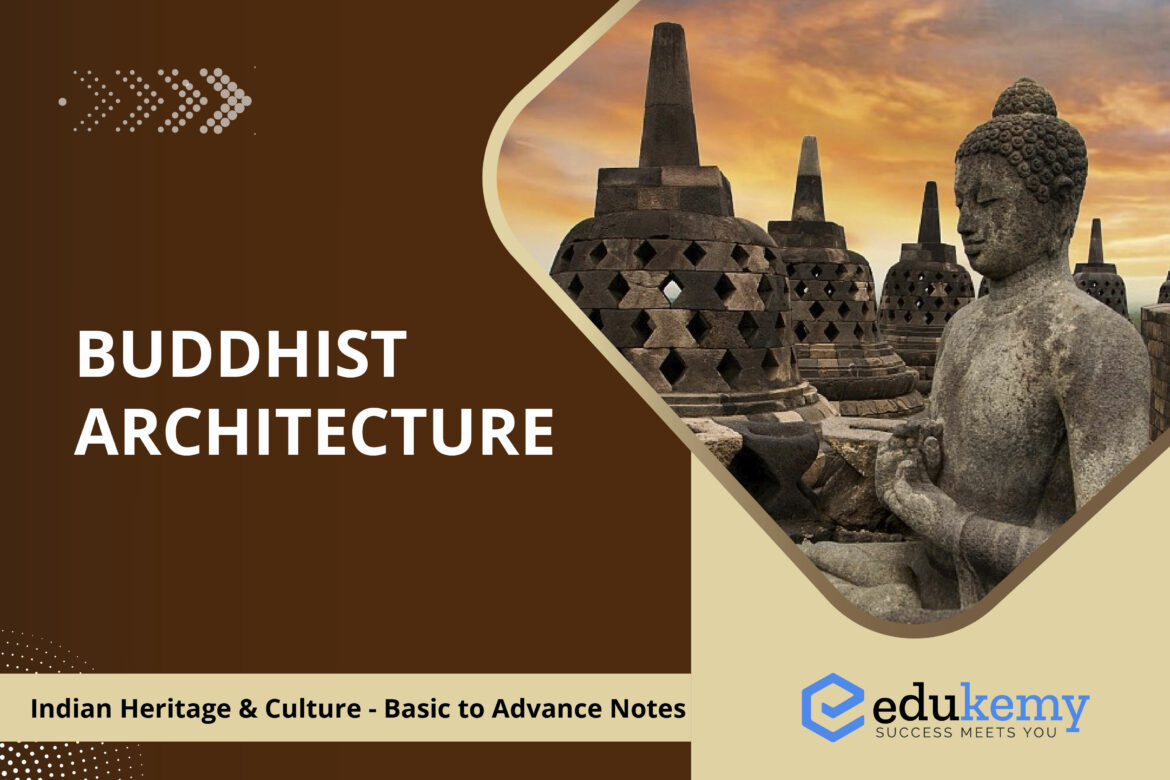
India’s architectural traditions owe their origin to Buddhism and Jainism, with developments in Buddhist architecture thriving between the fifth and fourteenth centuries. These often went hand-in-hand with Hindu architecture, and sites such as Ellora contain Buddhist, Hindu, and Jain monuments.
Bodhgaya is the pre-eminent Buddhist site in India, being the place where Siddhartha achieved enlightenment and became Gautama Buddha. While the Bodhi tree is of immense importance, the Mahabodhi Temple at Bodhgaya is also significant, serving as a reminder of the brickwork of that time. The first shrine at Bodhgaya, located at the base of the Bodhi tree, was said to have been constructed by King Ashoka. The design of the Mahabodhi temple is unique, being neither Dravida nor Nagara, but rather narrow like a Nagara temple, yet rising without curving like a Dravida one.
Contents
- 0.1 Other important Buddhist-related architectural monuments in India
- 0.2 Nalanda university
- 0.3 Sirpur in Chhattisgarh
- 0.4 Stupas
- 0.5 Viharas
- 0.6 Chaityas
- 1 FAQs
- 1.1 Q: What is Buddhist art and architecture, and why is it significant?
- 1.2 Q: How does knowledge of Buddhist art and architecture benefit UPSC aspirants?
- 1.3 Q: What are the key features of Buddhist caves art and architecture in India?
- 1.4 Q: How does Buddhist rock-cut architecture differ from other architectural styles?
- 1.5 Q: Are there any specific Buddhist art and architectural sites that UPSC aspirants should be familiar with?
- 1.6 For Admissions, talk to our Mentor – 9811333901, 9811333782
Nalanda university
Nalanda University is another important Buddhist architectural monument in India.
- It is a mahavihara, comprising several monasteries of various sizes.
- Most information about Nalanda comes from the records of Xuan Zang, which state that Kumargupta I laid the foundation for a monastery in the fifth century CE.
- Monks from China, Tibet, Central Asia, Sri Lanka, Thailand, Burma, and other countries in Southeast Asia made their way to Nalanda and its neighboring sites of Bodhgaya and Kurkihar.
- The excavated ruins of the institution reveal that bright red bricks were used in its construction.
- Nalanda has been included in UNESCO’s World Heritage Site.
Sirpur in Chhattisgarh
Sirpur in Chhattisgarh is an early-Odisha style site belonging to the period between 550 and 800, containing both Hindu and Buddhist shrines. Other such sites developed in regions such as Lalitagiri, Vajragiri, and Ratnagiri.

Stupas
Stupas are also important Buddhist architectural monuments in India. The older stupas were enlarged during the period between the Mauryas and Guptas, with famous ones such as Sanchi, Bharhut, and Amaravati.
- The Bharhut stupa was constructed during the time of Ashoka and depicts Jataka tales and stories.
- The Sanchi stupa, probably founded by Ashoka and enlarged during the time of Sungas, is the most well-preserved stupa among the three.
- The Amaravati stupa, completed around 200 AD, has carved panels telling the story of the life of Buddha.
- The Nagarjunakonda stupa in Andhra Pradesh belongs to the Saka-Satavahana era and reflects Mahayana Buddhism.
- Excavations have unearthed stupas, chaityas, and mandapams.

Viharas
Viharas were the ancient Indian term for a Buddhist monastery.
Originally, viharas were dwelling places used by wandering monks during the rainy season but eventually evolved into centers of learning and Buddhist architecture through the donations of wealthy lay Buddhists.
- Life in “viharas” was codified early on and is the object of a part of the Pali canon, the Vinaya Pitaka or “basket of monastic discipline.”
- Typical large sites such as the Ajanta Caves, Aurangabad Caves, Karli Caves, and Kanheri Caves contain several viharas.

Chaityas
Finally, chaityas refer to a shrine, sanctuary, temple, or prayer hall in Indian religions. Most early examples of chaityas that survive are Indian rock-cut architecture, with a gigantic hall having a high vaulted roof and a lot of sculpture work on the pillars and entrance. The largest Chaitya-Griha among all Buddhist monuments in India is the Karle caves, with many showing a stupa at the back.
FAQs
Q: What is Buddhist art and architecture, and why is it significant?
A: Buddhist art and architecture refer to the artistic and architectural expressions associated with Buddhism. They include various forms of visual and structural representations such as stupas, monasteries, sculptures, and paintings. These artifacts hold immense cultural and religious significance, as they reflect the values, beliefs, and history of Buddhism. Buddhist art and architecture provide valuable insights into the evolution of this religion and its impact on the societies where it has flourished.
Q: How does knowledge of Buddhist art and architecture benefit UPSC aspirants?
A: For UPSC aspirants, understanding Buddhist art and architecture is crucial for several reasons. It can be part of the Art and Culture section in the UPSC syllabus and helps candidates gain a deeper insight into India’s rich cultural heritage. It also helps in comprehending the historical context, social structures, and the spread of Buddhism, which can be relevant in the history and geography sections of the UPSC examinations.
Q: What are the key features of Buddhist caves art and architecture in India?
A: Buddhist caves, also known as rock-cut caves, were often used as monastic residences, meditation centers, and religious sanctuaries. They exhibit intricate carvings, sculptures, and frescoes, often depicting scenes from the life of Buddha. Some famous examples include the Ajanta and Ellora Caves. These caves showcase the transition of Buddhist architecture from wooden structures to rock-cut designs, illustrating the influence of art and religion on Indian history.
Q: How does Buddhist rock-cut architecture differ from other architectural styles?
A: Buddhist rock-cut architecture is unique in that it involves carving structures, such as monasteries and stupas, directly into solid rock. This approach allowed for the creation of ornate, multi-story complexes within the rock, as seen in the Ajanta and Ellora Caves. This form of architecture is specific to Buddhist and Jain traditions in India and represents an innovative adaptation of natural rock formations for religious purposes.
Q: Are there any specific Buddhist art and architectural sites that UPSC aspirants should be familiar with?
A: Yes, UPSC aspirants should be well-acquainted with key Buddhist art and architectural sites, such as the Ajanta and Ellora Caves, Sanchi Stupa, Mahabodhi Temple in Bodh Gaya, and the caves of Kanheri in Mumbai. These sites represent different periods and styles of Buddhist art and architecture in India and are important in understanding the country’s cultural history.
For UPSC Prelims Resources, Click here
For Daily Updates and Study Material:
Join our Telegram Channel – Edukemy for IAS
- 1. Learn through Videos – here
- 2. Be Exam Ready by Practicing Daily MCQs – here
- 3. Daily Newsletter – Get all your Current Affairs Covered – here
- 4. Mains Answer Writing Practice – here
Visit our YouTube Channel – here

